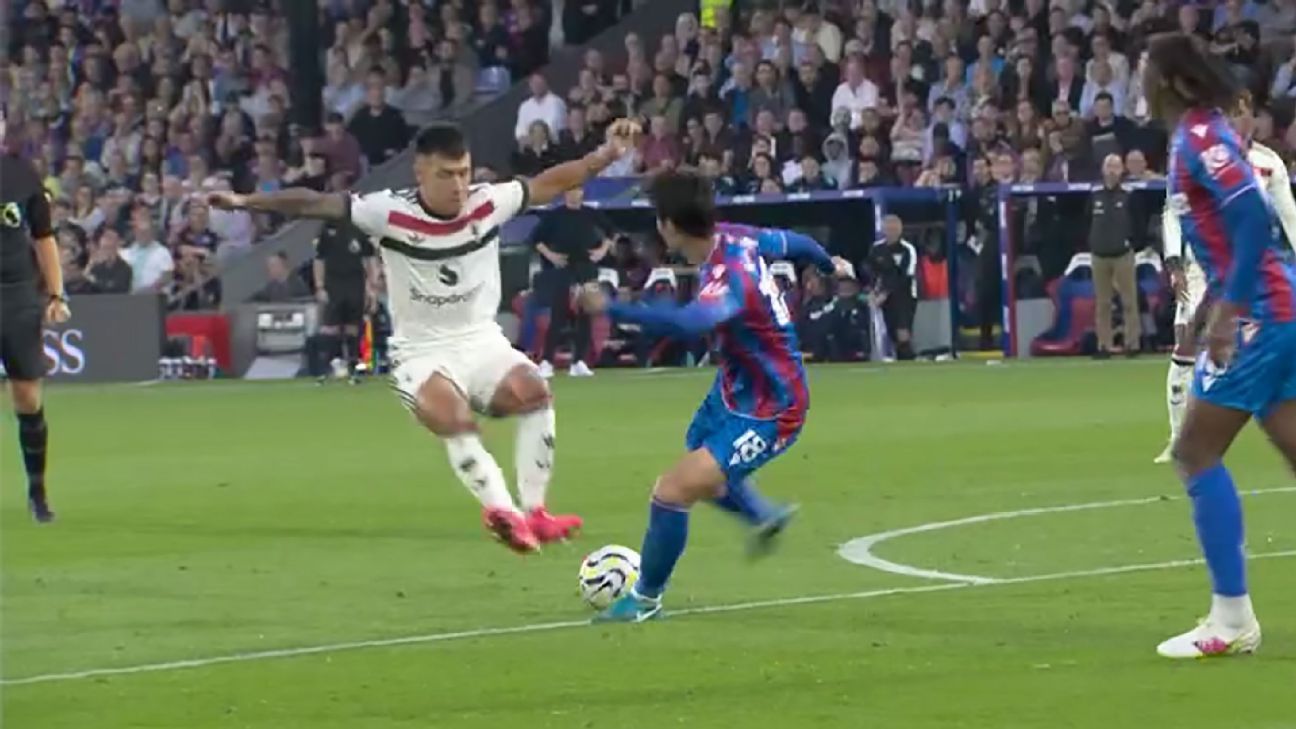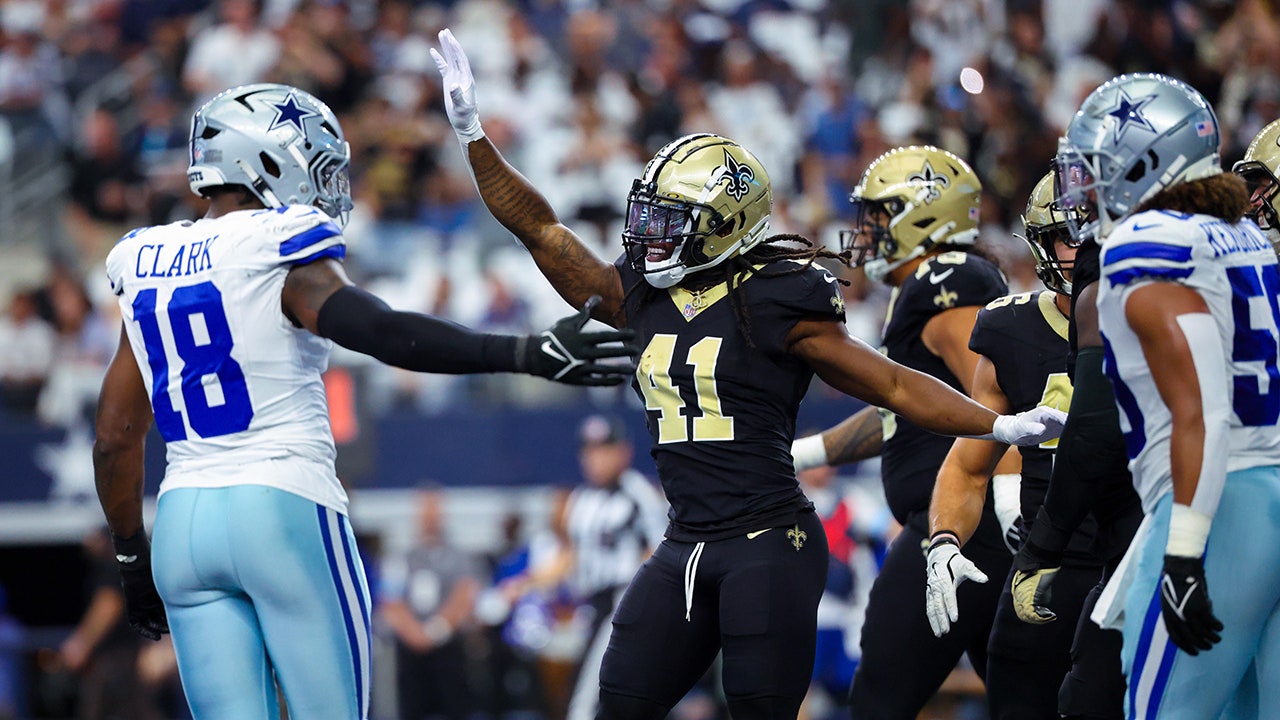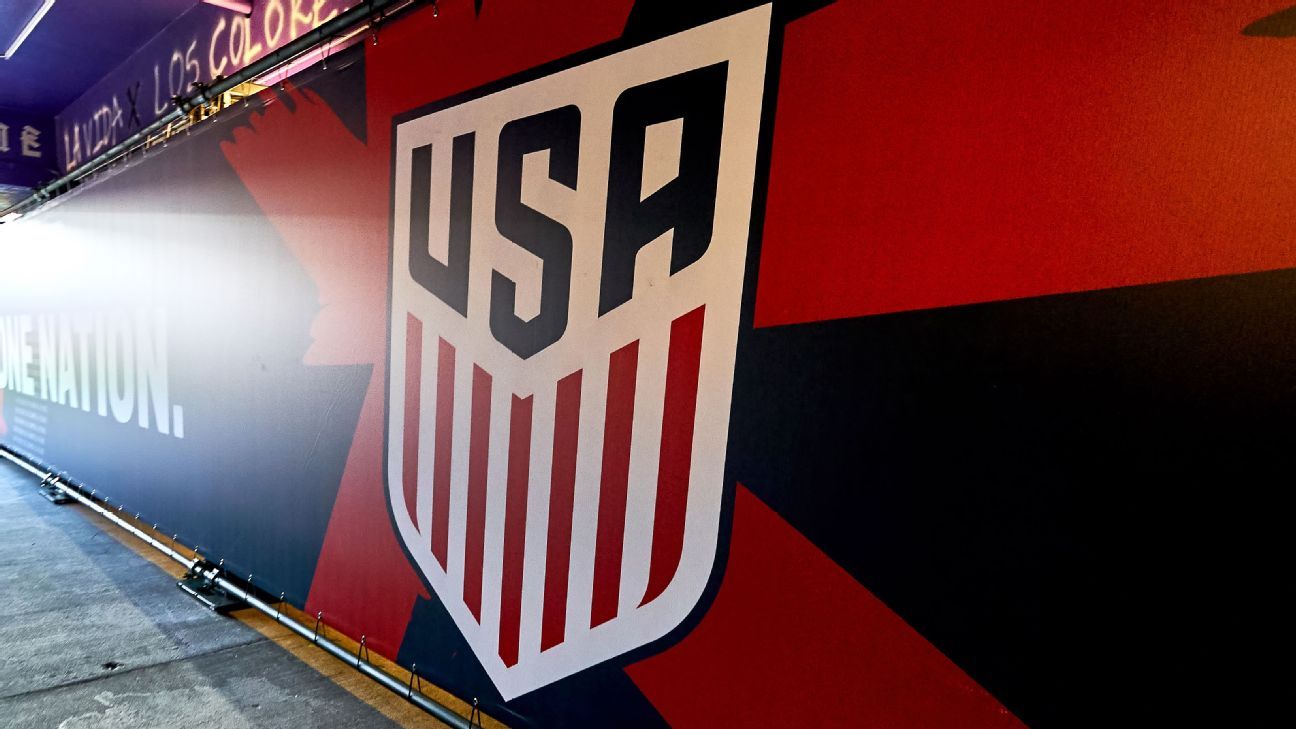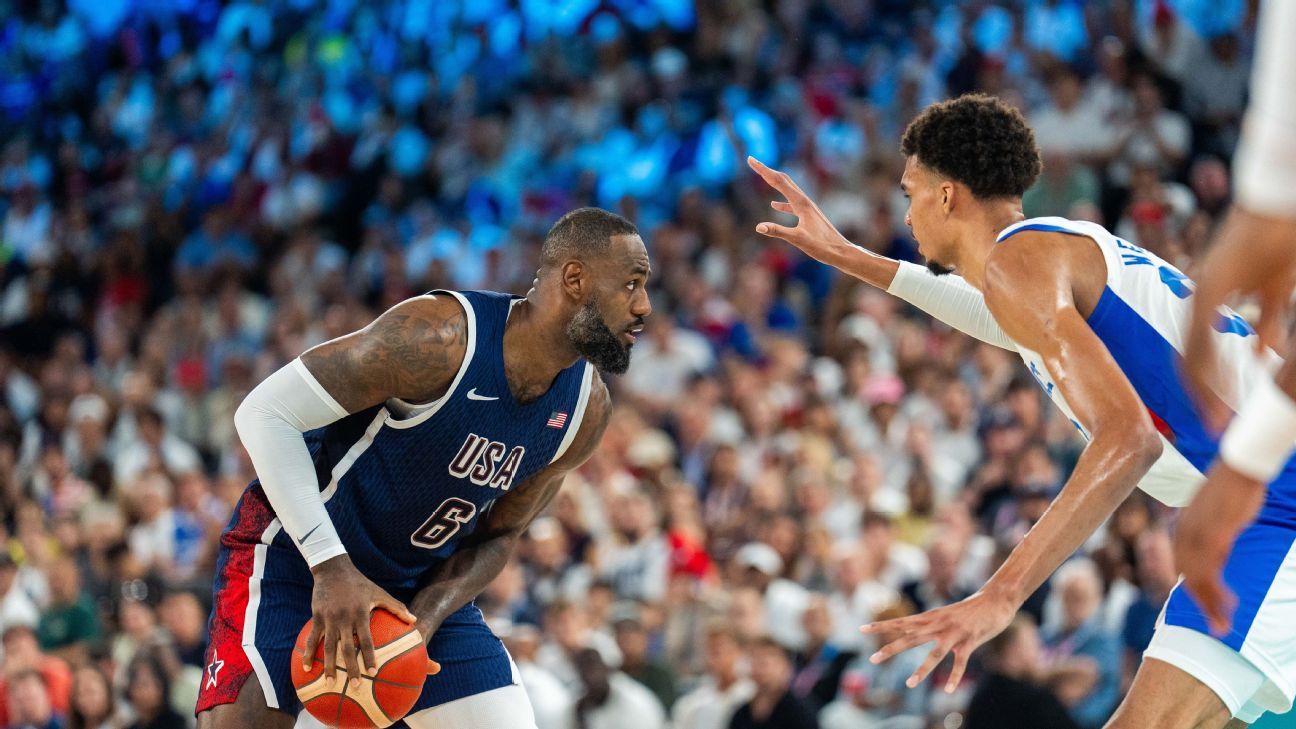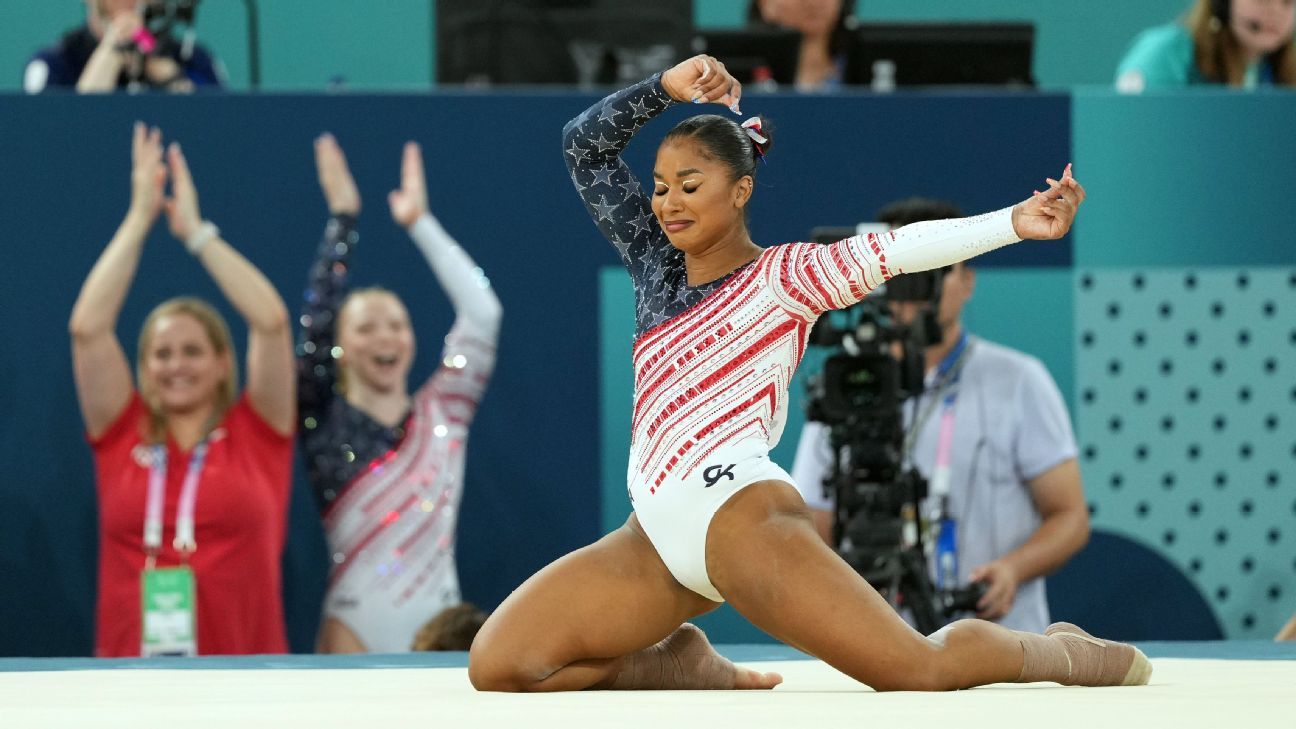The video assistant referee (VAR) is a weekly source of controversy in the Premier League, but how are decisions made and are they correct?
After each weekend we take a look at the most significant incidents, to examine and explain the process both in terms of the VAR protocol and the Laws of the Game.
In this week's VAR analysis: Should Manchester United defender Lisandro Martinez have been sent off against Crystal Palace? Did Arsenal's Gabriel Martinelli foul Manchester City goalkeeper Ederson before Gabriel scored? And did Tottenham Hotspur goalkeeper Guglielmo Vicario deserve a red card?
Possible red card for Martinez's foul on Kamada
What happened: Manchester United went on the attack in the 63rd minute when the ball went out on the edge of the area. Crystal Palace midfielder Daichi Kamada went to mark Lisandro Martinez, but the United player appeared to go in with both feet. Referee David Coote awarded a free kick to Palace and booked Martinez.
VAR Decision: No red card.
VAR Review: VAR Chris Kavanagh decided that as Martinez made no contact with Kamada, the yellow card shown to him on the pitch was an acceptable disciplinary sanction, but it is difficult to see how this foul could be considered a footballing action. Nor does the law require that a player has to make contact with an opponent for it to be a red card-worthy offence.
Martinez jumped straight at Kamada, stamping on the ball in a manner that must be regarded as a threat to the safety of an opponent. How can there be any justification for attempting to play the ball in this manner? Martinez should have been sent off.
Luton Town midfielder Jacob Brown escaped a VAR red card for a similar foul against Manchester City last season by jumping with both feet and making contact with the ball. Brown attacked Phil Foden with one foot rather than two and, although there was slight contact with the opponent's leg, there was no stamping motion.
The Premier League's independent Key Match Incidents (KMI) Committee voted unanimously that referee Tim Robinson and VAR Jarred Gillett had not given a red card for serious foul play. It said: “The attacker gets away with this challenge because he wins part of the ball, but the technique of the two-footed leaping tackle is shocking and very dangerous.”
You could copy and paste that description into this incident.
Possible penalty: Handball by Lacroix and Lerma
What happened: In the 68th minute, United took a free-kick inside the box, which bounced off the head of Palace's Ismaïla Sarr before touching the arm of Maxence Lacroix and then Jefferson Lerma. The ball went out for a corner.
VAR Decision: No penalty.
VAR Review: This season, handball will have to be blatant for VAR to intervene, and the interpretation will be closer to that of a few years ago. But even with a more relaxed approach, this would not have resulted in a penalty last season either.
Both Lacroix and Lerma have their arms in positions justifiable by their movement, not extended away from the body, and neither places their hand on the ball.
Possible foul before goal: Martinelli on Ederson
What happened: Arsenal took the lead in first-half stoppage time when Gabriel Magalhães headed in Bukayo Saka's corner, but was there a foul on goalkeeper Éderson when the cross went high?Look here)
VAR Decision: The target is standing.
VAR Review: It was almost an exact copy of a corner play made a few minutes earlier. Saka sent the ball in at the far post to find the run of Gabriel, and Gabriel Martinelli got in behind Ederson to create a blocking position.
This could well lead to VAR intervention in the other major European leagues, with contact with the goalkeeper in the six-yard box, but there are plenty of examples where it is not penalised in the Premier League.
If an attacking player stands his ground or does not make a clear move towards the goalkeeper, it is considered normal football contact and that is why there was no intervention by VAR, John Brooks.
Two years ago, Arsenal suffered a similar decision when Aston Villa's Douglas Luiz scored directly from a corner. Boubacar Kamara was accused of blocking Arsenal goalkeeper Aaron Ramsdale, but VAR ruled that the Villa player had not moved and there was no foul.
And last season, Tottenham Hotspur goalkeeper Guglielmo Vicario conceded goals against Manchester City and Everton when the opposition placed players in front of him to prevent a clear run on the ball.
It all comes down to whether you think a goalkeeper has the right to run freely onto the ball, or whether it's his (or a teammate's) responsibility to make sure he doesn't get blocked. It can also be argued that Ederson put himself in a bad position on both corner plays.
Possible red card for Haaland for throwing the ball at Gabriel
What happened: After Manchester City equalised in the eighth minute of added time, Erling Haaland picked the ball out of the back of the net and lobbed it at Gabriel's head as he ran back onto the pitch.Look here)
VAR Decision: No red card.
VAR Review: It's petulant, but the suggestion that we should see VAR red cards for this is completely wrong. Brooks analysed it, but did not consider it to be an act of violent conduct.
We see players kick and throw the ball at opponents on a regular basis, but they never get sent off for it. That's not to say that the case can't be argued within the law, but Haaland would really have had to have thrown the ball with much more force or brutality for VAR to deem this a red card, but the City striker would have been booked if the on-field officials had seen it.
Possible penalty: Fofana's challenge in Summerville
What happened: West Ham United were 2-0 down and were on the attack in the 28th minute when Crysencio Summerville tried to latch onto a pass from Lucas Paquetá. Chelsea defender Wesley Fofana grabbed Summerville's arm and he fell to the ground. Referee Sam Barrott waved away the penalty appeals and the match went to VAR, Stuart Attwell.
VAR Decision: No penalty.
VAR Review: It's all about judging the impact of a player's actions, and many will feel that Fofana prevented Summerville from receiving the pass and that it should be a penalty.
We have seen several similar situations that did not end in penalties, where the hold was not prolonged and that did not cause the attacker to fall as he did.
So the VAR is considering whether the hold actually affected Summerville in the way you suggest. Attwell will take into account how long Summerville was held and whether the player fell down in a theatrical manner; does that fit with the nature of the hold?
Attwell has decided the hold was only “fleeting” and that Summerville went down too easily. He is on the verge of an intervention, but perhaps not quite reaching the high bar of the Premier League.
The KMI panel may say this should have been given as an on-field penalty, but it did not meet the VAR threshold. West Ham benefited from this earlier in the season for the penalty they won against Aston Villa. The KMI panel felt referee Tony Harrington should not have given it, but also said it was subjective and not a serious enough error to warrant VAR overturning the penalty.
The high level of demand has meant that VAR in the Premier League has not produced results that, for many, would be fairer. But the PGMOL and the Premier League would say that it is the perfect example of a “referee’s decision”, so whichever way it is made, it is still a decision made on the pitch, as it falls within the corridor of subjectivity, where any result is acceptable.
Last season, at this stage, there had been seven subjective VAR interventions, whereas this season there have only been three, one of them for offside. This is a small sample and it is too early to draw conclusions about the number of interventions, and there has actually been much less controversy with refereeing decisions this season.
Possible red card: Vicario's handball
What happened: Yehor Yarmoliuk crossed into the box in the 58th minute, and Tottenham goalkeeper Vicario came forward to collect the ball ahead of Mikkel Damsgaard. Vicario needed three touches to clear the ball from Damsgaard, but the third was just outside the area. The referees allowed play to continue, and Kristoffer Ajer was booked for his protests.
VAR Decision: No red card.
VAR Review: There is a common misconception that handling the ball outside the box is an automatic red card, but the goalkeeper must be denying a clear goalscoring opportunity (DOGSO).
Vicario's first two touches are important as they occur when the ball is inside the box and is brought behind Damsgaard and away from goal. That means the direction of movement is away from goal, Damsgaard has no realistic chance of gaining immediate control of the ball and two Tottenham players would have the ability to block him.
If Vicario had touched the ball outside the box and it was heading towards goal for Damsgaard to run onto, that would be a clear example of DOGSO.
As it is not a foul, the VAR cannot intervene to warn referee John Brooks that there was no handball and that he should give a foul and a yellow card. The real doubt lies with the assistant, as he had the key vision to detect that Vicario had touched the ball with his hand outside the area.
It should have been a booking and a free kick for Brentford, but nothing more than that.
Some factual parts of this article include information provided by the Premier League and PGMOL.

